Epic Guide to Fort Larned National Historic Site located in Central Kansas! This guide includes history, things to do, where to stay, nearby camping, and so much more!
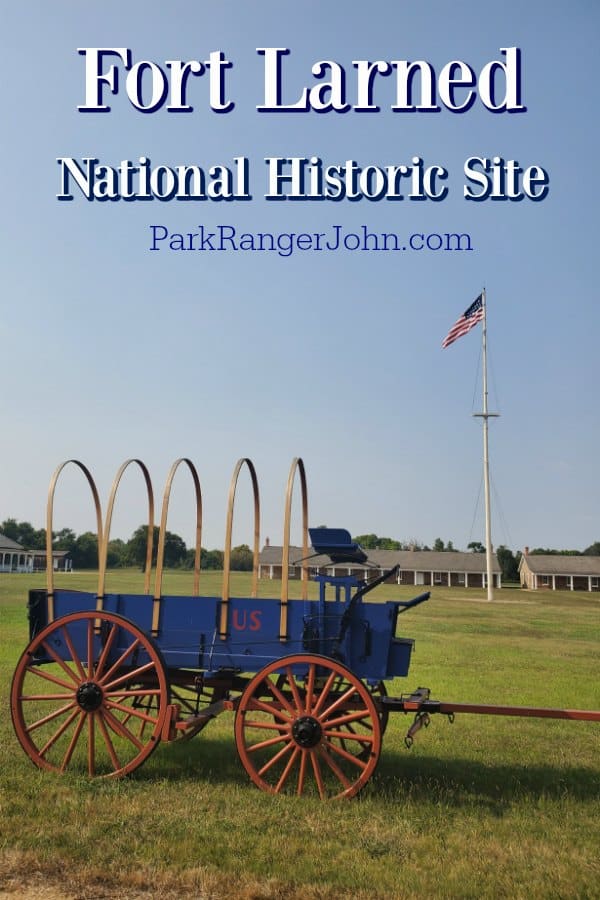
Fort Larned National Historic Site
Fort Larned National Historic Site is located in central Kansas. The fort was known as the Guardian of the Sante Fe Trail as their main goal was to escort mail coaches and military supply wagons along the Santa Fe Trail. Their broader mission was to keep peace in the plains.
Today you can enjoy visiting the park which has been maintained to an amazing level. This National Historic Site amazed us with how well it has been maintained and the displays within the buildings.

About Fort Larned National Historic Site
Fort Larned can be enjoyed in several different ways. You can simply show up and explore the buildings including the Officers Quarters, barracks, shops at the fort at your own leisure. You can also use your cellular phone and listen to the cell phone tour of the Fort and the "History and Nature Trail" tours.
Guided tours are also available and last approximately one hour. Simply check-in at the parks visitor center and see when the next tour is taking place. Large groups and school groups must call ahead and make a reservation for a guided tour.
Fort Larned was a place where numerous cultures mixed. Here you found the Buffalo Soldiers, homesteaders, hide hunters, railroad workers, Hispanic Teamsters, and the Plains Indians. The US Army Regulators also served with paroled Confederates.
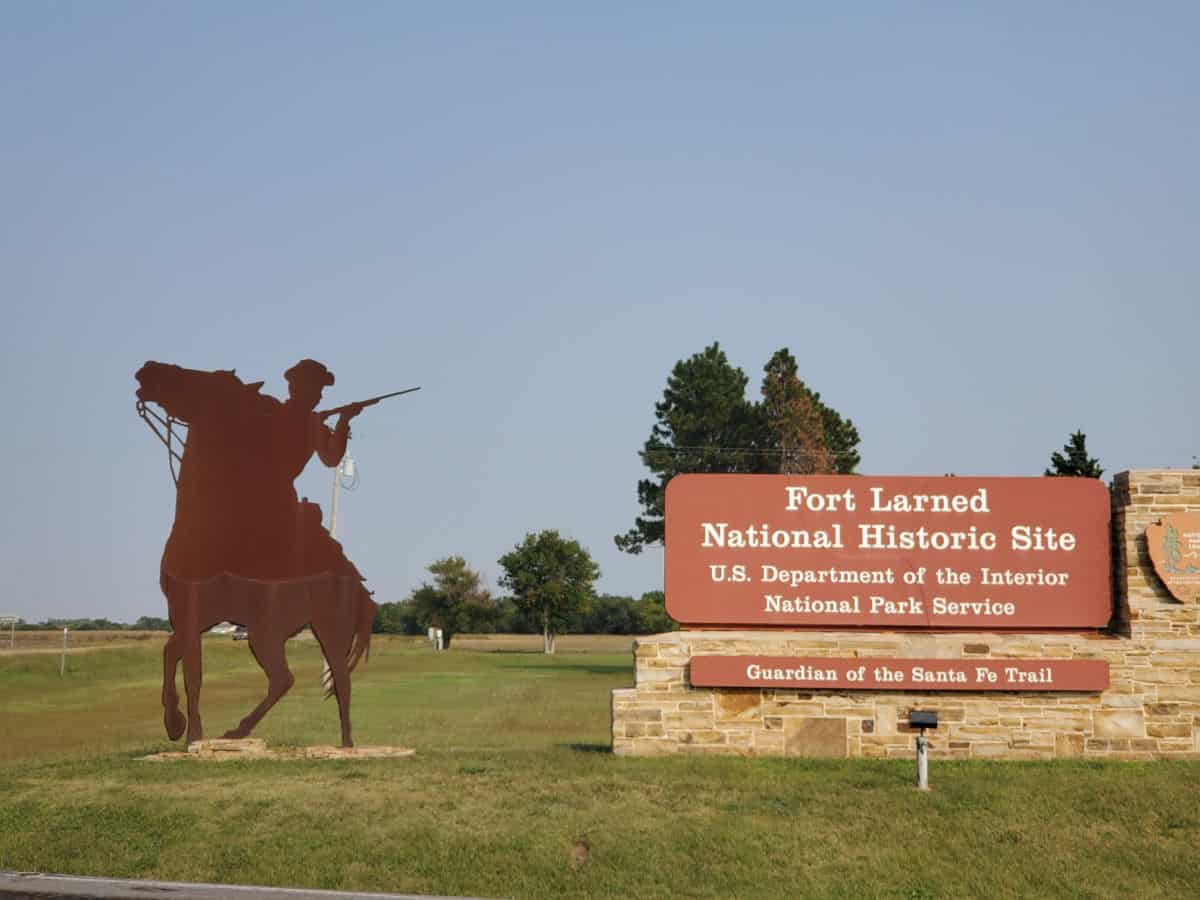
Is Fort Larned National Historic Site worth visiting?
Yes, The Fort is really interesting and we enjoyed our visit. It was fascinating wandering through the well-preserved fort, parade ground, and original stone structures.
The period furnishings in the reconstructed blockhouse and authentic Army commanding officer rooms was fascinating.
This is one of the best-restored fort park unit of the National Park System. We were amazed at how well restored the park is.
History of Fort Larned National Historic Site
Fort Larned National Historic Site preserves the site of Fort Larned, which was operational from the 1860s until the 1870s. The fort was constructed on the Pawnee Fork to protect travelers making their way along the Santa Fe Trail.
The Santa Fe Trail was one of the most important travel corridors from the 1820s until the 1880s. The trail connected Independence, Missouri, with Santa Fe, New Mexico. When gold was discovered in California in the 1840s and in Colorado in the 1850s, traffic along the route increased dramatically.
The Santa Fe Trail included 900 miles of the Great Plains region, home to many Native Nations tribes. As the increase in traffic along the trail disrupted the lives of the Native Nations, attacks along the route became more frequent. Fort Larned was built to house the U.S Army, who became known as the Guardians of the Santa Fe Trail.
The Beginning of Fort Larned
Before the permanent sandstone buildings of Fort Larned were erected, there was a temporary post called Camp on Pawnee Fork. In 1859, the Santa Fe Trail was bustling with activity as people made their way west to trade, travel, or settle. The trail was an important transportation corridor between the eastern United States and the west.
Increasing traffic in the region placed pressure on resources in the area. The trail, which passed through five states, traversed lands that belonged to Native Americans.
Due to increasing hostilities between the Native people who called the region home and those traveling along the trail, the U.S Army set up ‘Camp on Pawnee Fork.’ The camp was situated on the banks of the Pawnee River near Lookout Hill.
Camp on Pawnee Fork became Camp Alert, as the U.S Army soldiers based there were always on the lookout for trouble on the Santa Fe Trail. In 1860, Camp Alert was moved closer to where the Arkansas and Pawnee Rivers meet.
The military began construction on their permanent post, Fort Larned at the new site. Fort Larned consisted of nine buildings that housed a hospital, barracks, officer's quarters, bakery, a blacksmith, carpenter, and more. The Fort Larned National Historical Site protects the structures that remain.
This period of conflict between the Great Plains tribes and the Americans is known as the Plains Wars. The Plains Wars began in the 1850s and continued into the 1870s. Fort Larned played a significant role in this conflict from the 1860s to the 1870s.
What Happened at Fort Larned?
As tensions between the Native Nations and the Americans increased, Fort Larned became one of the most important defenses along the Sant Fe Trail. In 1864, no one was allowed to travel past the fort without a military escort after the Sand Creek Massacre.
The fort became the base for several military campaigns against the Native Nations tribes who lived in the Great Plains region. In 1867 Major General Winfield S. Hancock, who made a name for himself fighting for the Union at the Battle of Gettysburg, used Fort Larned as his base of operations.
Hancock launched a campaign against the tribes of the Great Plains, determined to bring peace to the region one way or another. His campaign, termed Hancock’s War, was a disaster that instigated more, not less violence. War erupted on the plains, with an increase in raids and battles at several forts by the Comanche, Cheyenne, Arapaho and Kiowa tribes.
Hancock was moved from Fort Larned and replaced by General Phillip H. Sheridan. Colonel George A. Custer defeated the Cheyenne and ended hostility around the fort in 1868.
What Happened to Fort Larned?
After 1868, Fort Larned and its inhabitants worked to maintain peaceful relationships with the tribes of the Plains. A series of treaties were drawn up and signed by each party to keep the peace. The tribes agreed to keep peace on the Santa Fe Trail in return for commodities and supplies such as coffee, wheat, flour, sugar, beads, and gunpowder.
Fort Larned became a prominent trading post in 1868, thanks to the treaties. When most Great Plains tribes were relocated to reservations, Fort Larned served little use. The soldiers at Fort Larned protected the builders working on the railroad as they made their way through Kansas.
Construction of the railroad was completed in 1872, which meant the Santa Fe Trail was no longer the main transport corridor from east to west. With the threat of violence from the tribes removed, and the railroad now being used to transport people and goods across the country, Fort Larned was no longer needed.
The U.S Army abandoned the fort in 1878. Today Fort Larned National Historical Site preserves the stories of conflict and trade along the Santa Fe Trail and sheds light on what life was like in a frontier fort in the 1800s.
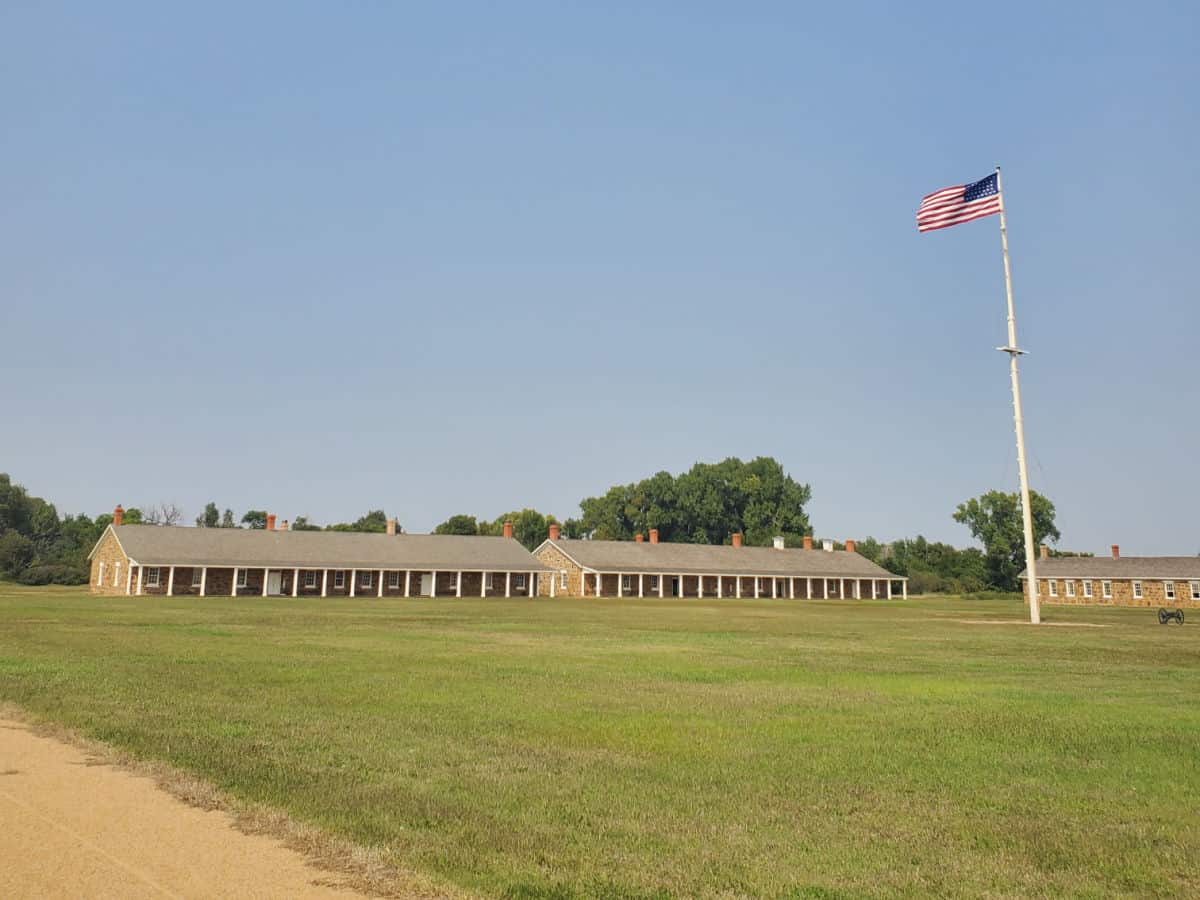
Things to know before your visit to Fort Larned National Historic Site
Entrance fee
$0.00 - There is no entrance fee to visit the park.
Learn more about National Park Passes for parks that have an entrance fee.
$80.00 - For the America the Beautiful/National Park Pass. The pass covers entrance fees to all US National Park Sites and over 2,000 Federal Recreation Fee Sites for an entire year and covers everyone in the car for per-vehicle sites and up to 4 adults for per-person sites.

Buy your pass at this link, and REI will donate 10% of pass proceeds to the National Forest Foundation, National Park Foundation, and the U.S. Endowment for Forestry & Communities.
National Park Free Entrance Days -Mark your calendars with the five free entrance days the National Park Service offers annually.
Time Zone
Central Time
Pets
Pets must be on a leash at all times while visiting the park. Pets are not allowed in park buildings but can visit the grounds and nature trail.
Cell Service
We had hit and miss service with T-Mobile. 1 to 2 bars at most
Park Hours
Fort Larned NHS is open daily from 8:30AM to 4:30PM Central Time.
The park is open seven days a week and only closed on Thanksgiving, Christmas Day and New Year's Day.
Wi-Fi
There is no public Wi-Fi in the park.
Insect Repellent
Insect repellent is always a great idea when outdoors, especially if you are around any body of water.
We use Permethrin Spray on our clothes before our park trips.
Water Bottle
Make sure to bring your own water bottle and plenty of water with you. Plastic water bottles are not sold in the park.
Parking
There is a large parking lot near the bridge that heads to the fort
Food/Restaurants
There are no restaurants in the park.
Gas
There are no gas stations within the park.
Drones
Drones are not permitted within National Park Sites.
National Park Passport Stamps
We like to use these circle stickers for park stamps so we don't have to bring our passport book with us on every trip.
The National Park Passport Book program is a great way to document all of the parks you have visitied.
You can get Passport Stickers and Annual Stamp Sets to help enhance your Passport Book.
Electric Vehicle Charging
There is a ChargePoint Charging Station at 200 10th St, Great Bend, KS 67530, United States
Time needed
I would plan at least an hour to two hours to visit the park if not more time. We were amazed at how many buildings there are to walk through and the blacksmith shop is a must-visit.
Restrooms
The only restroom is in the parking lot. There is no bathroom in the actual fort area. You will want to make sure everyone is aware. It is a 5-10 minute walk back to the bathroom from the fort.
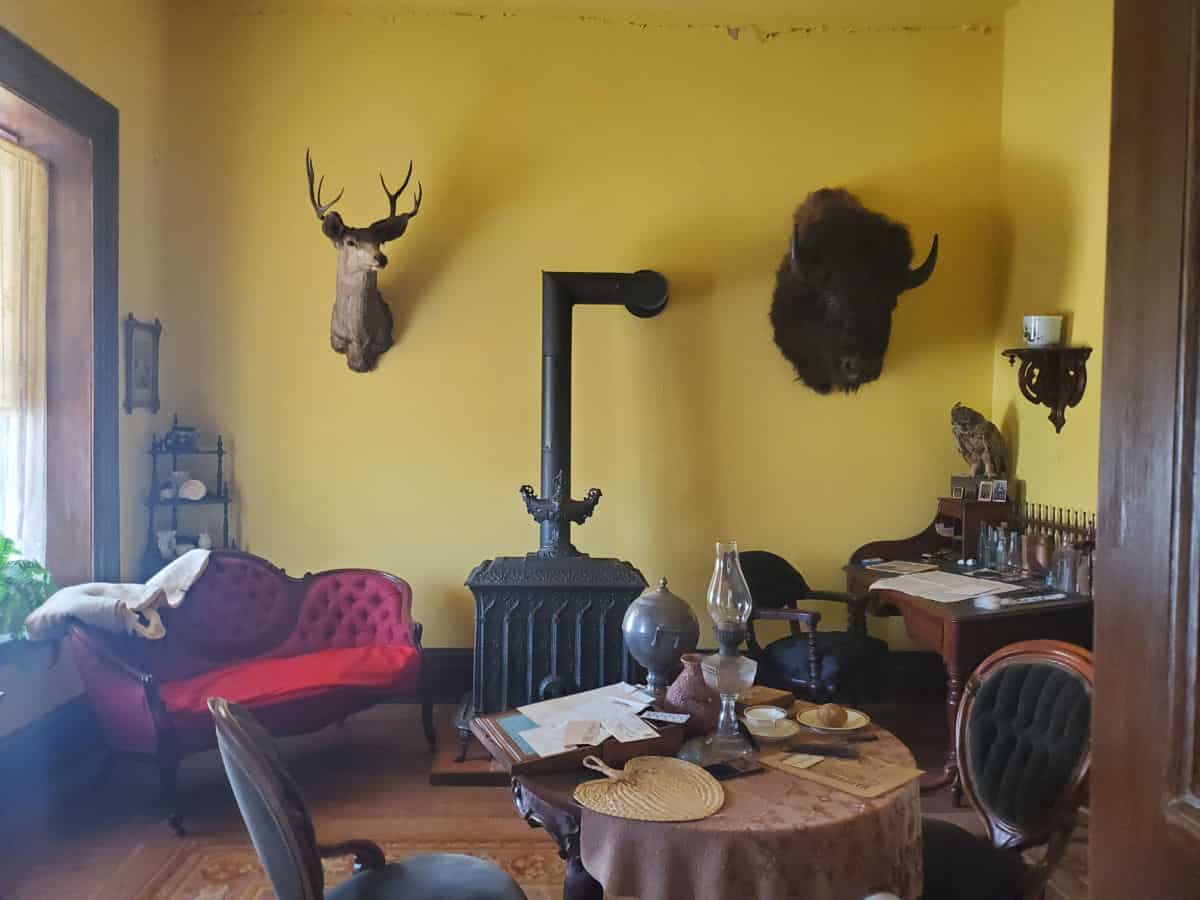
Details about Fort Larned National Historic Site
Size - 718 acres
Check out how the park compares to other National Parks by Size.
Date Established
August 31, 1964
Visitation
In 2022, Fort Larned NHS had 26,219 visitors
In 2021, Fort Larned NHS had 29,442 park visitors.
In 2020, Fort Larned NHS had 21,895 park visitors.
In 2019, Fort Larned NHS had 26,958 park visitors.
Learn more about the most visited and least visited National Parks in the US.
National Park Address
1767 KS Hwy 156
Larned, KS 67550
United States
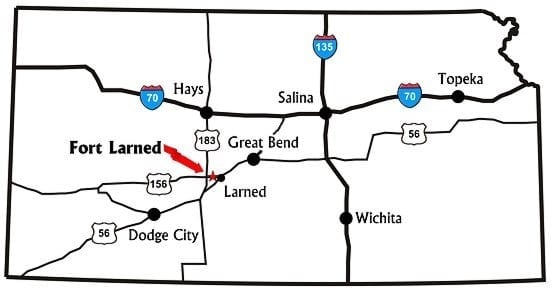
Where is Fort Larned National Historic Site?
Fort Larned National Historic Site is located on KS Hwy 156, six miles west of Larned Kansas.
When driving to Fort Larned NHS be careful driving through small towns. The speed limit changes quickly and you do not want to get pulled over during your Midwest National Park road trip.
Estimated distance from major cities nearby
- Salina, KS - 102 Miles
- Wichita, KS - 125 Miles
- Oklahoma City, OK - 283 Miles
- Tulsa, OK - 297 Miles
- Lincoln, NE - 290 Miles
- Kansas City, MO - 278 Miles
- Omaha, NE - 345 Miles
- Colorado Springs, CO -351 Miles
- Denver, Co - 396 Miles
- Lubbock, TX - 430 Miles
Estimated Distance from nearby National Park
Rocky Mountain National Park - 450 miles
Gateway Arch National Park - 526 miles
Hot Springs National Park - 543 miles
Wind Cave National Park - 554 miles
Great Sand Dunes National Park - 399 miles
Black Canyon of the Gunnison National Park - 534 miles
Mammoth Cave National Park - 811 miles
Where is the National Park Visitor Center?
The park visitor center is located in one of the original barracks buildings.
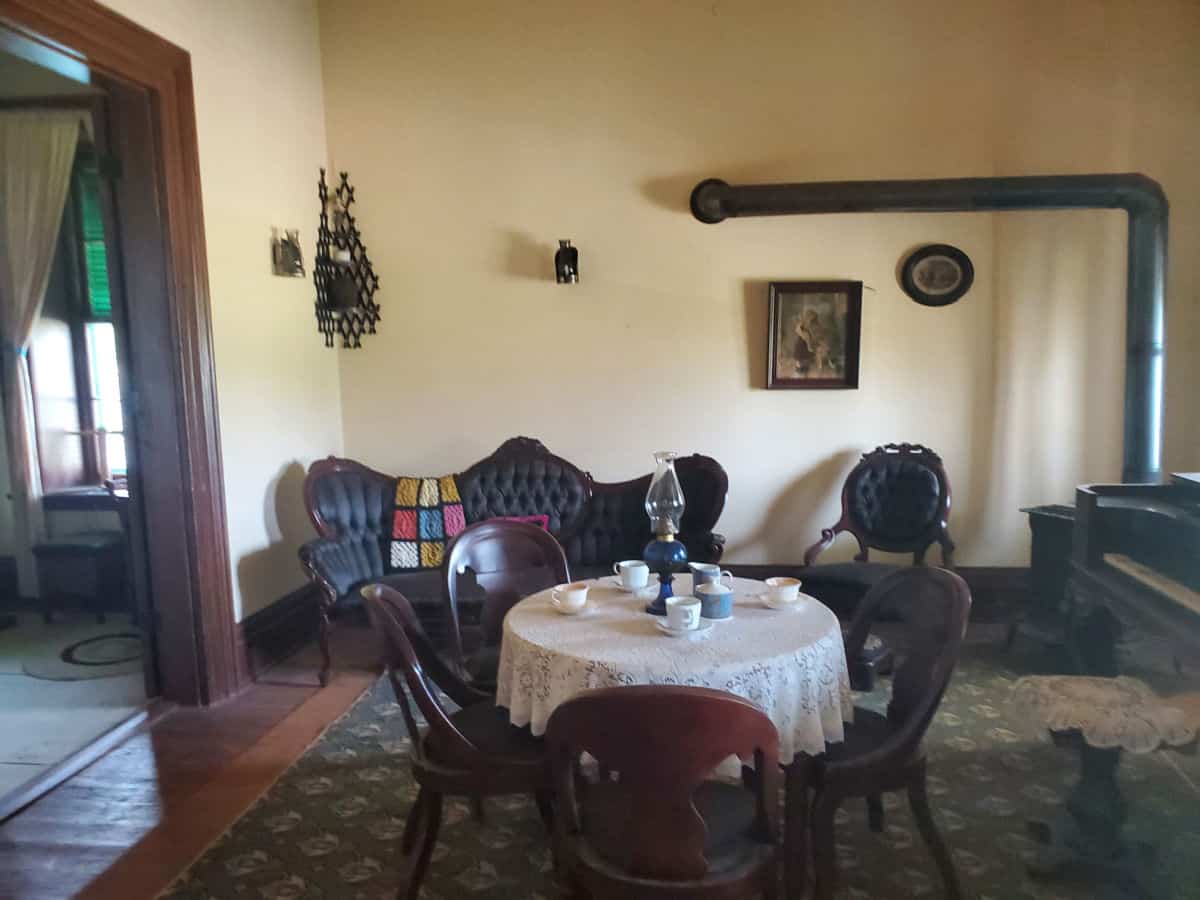
Getting to Fort Larned National Historic Site
Closest Airports
Great Bend Municipal Airport is the nearest airfield with commercial flights, located about 26 miles from Fort Larned NHS.
International Airports
- Kansas City International Airport (MCI)
- Denver International Airport (DEN)
Regional Airports
- Dodge City Regional Airport (DDC)
- Salina Municipal Airport (SLN)
- Wichita Dwight D. Eisenhower National Airport (ICT)
Driving Directions
Fort Larned National Historic Site is located on KS Hwy 156, six miles west of Larned, KS.
From I-70 Westbound
Take exit 225 for KS 156. Turn left and follow KS 156 approximately 82 miles to Fort Larned National Historic Site.
From I-70 Eastbound
Take exit 159 for US Hwy 183 south. Follow Hwy 183 about 49 miles south to KS 156. Turn left on KS 156 and continue about 5 miles to Fort Larned National Historic Site.
From Dodge City
Follow Hwy 56 to Hwy 183 north. Follow 183 north to KS 156. Turn right on KS 156 and continue 5 miles to Fort Larned NHS.
From Wichita
There are several possible routes. If you prefer major highways, follow Hwy 54 west of Wichita to Hwy 183 north in Greensburg, KS. Follow Hwy 183 north to KS 156. Turn right on KS 156 and continue 5 miles to Fort Larned NHS. If you prefer a shorter distance, follow KS 96 north from Wichita to US Hwy 50 west in Hutchinson. Follow US Hwy 50 west to KS 19. Follow KS 19 north into Larned. Turn left on KS 156 and continue 6 miles to Fort Larned NHS
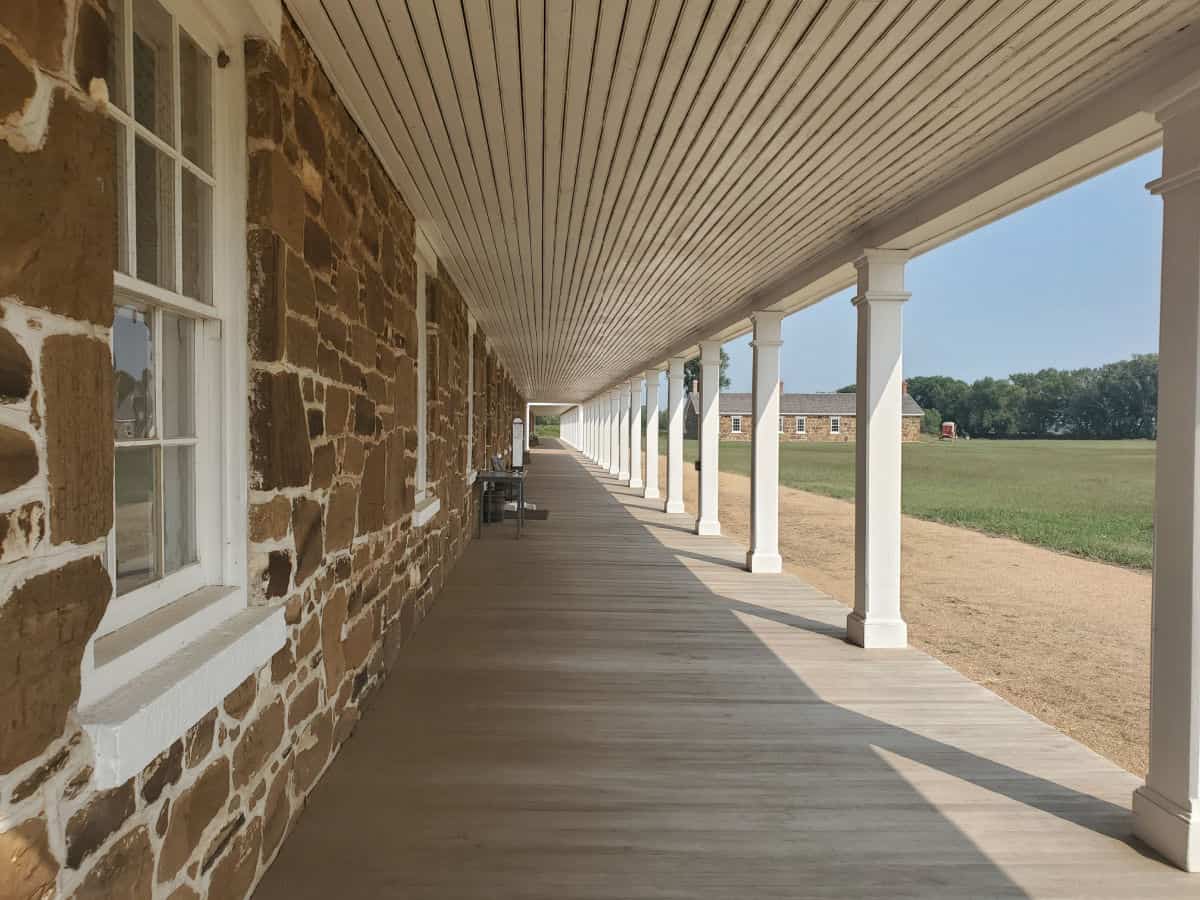
Best time to visit Fort Larned National Historic Site
The best time to visit Fort Larned NHS is during fall and spring when the weather is comfortable and you do not have to melt with humidity.
That being said the park is worth visiting any time of the year you can make it there.
Weather and Seasons
The warmest weather is from June 1st to August 31st, with an average daily high temperature above 82 degrees.
The coolest weather is from December 30th to January 5th, with an average daily high temperature below 42 degrees.
The snowiest weather typically occurs between December 1st to February 29, with an average of at least 2.8 inches a month. December gets the most snow with an average of 3.5 inches.
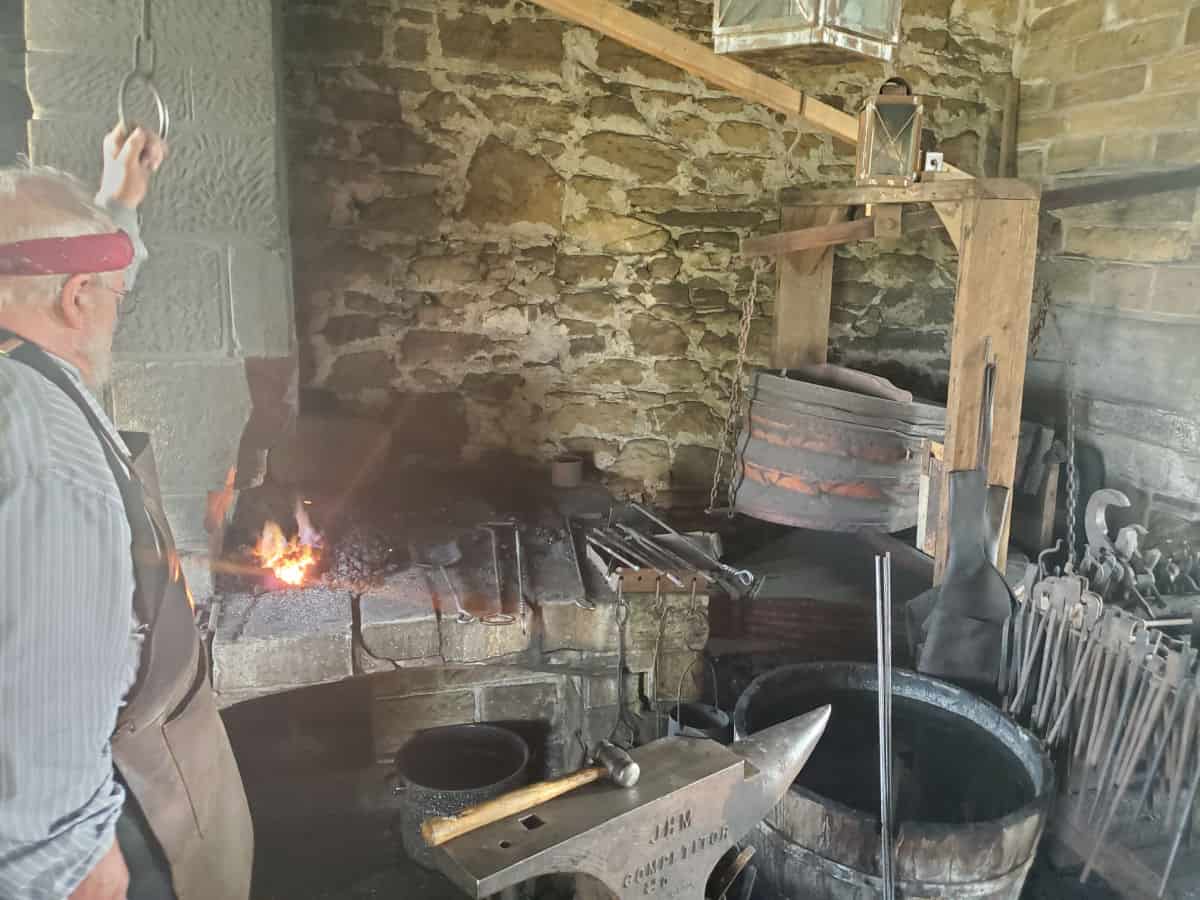
Best Things to do in Fort Larned National Historic Site
We suggest planning a few hours to visit Fort Larned NHS! We ended up spending a ton of time in the blacksmith shop it was so fascinating.
The park is gorgeous and well worth planning time to walk into the historic buildings.
Junior Ranger Program
The Junior Ranger program is a fantastic way to learn more about the park.
Officer's Row
A typical company's officers Quarters included two lieutenants, who could each select one room in the officers' quarters, and one captain, who could claim two rooms.
Barracks/ Hospital/ Visitor Center
The barracks were designed to house up to four companies of infantry and cavalry. Next to the barracks was the Hospital.
Today, the visitor center is housed in one of the fort's barracks. You can get your National Parks Passport book stamp here along with learning more about the park.
Shops/ Bakery/ Blacksmith Shop
One of the must-visits spots at Fort Larned NHS is the blacksmith shop! Pete Bethke the Park Blacksmith is amazing!!!
We could have spent hours talking with him and learning about his 40 years working as a blacksmith.
It was amazing to learn that Pete is making sure that the wagons and other items within the park have authentic blacksmith worked metal pieces.
While we were there he showed us a wagon that he was redoing all of the manufactured chains that were currently on the wagon and replacing it with the chain he builds by hand.
Pete is a wealth of knowledge about the park and was able to answer so many of our questions plus teach us so much more about what we were experiencing.
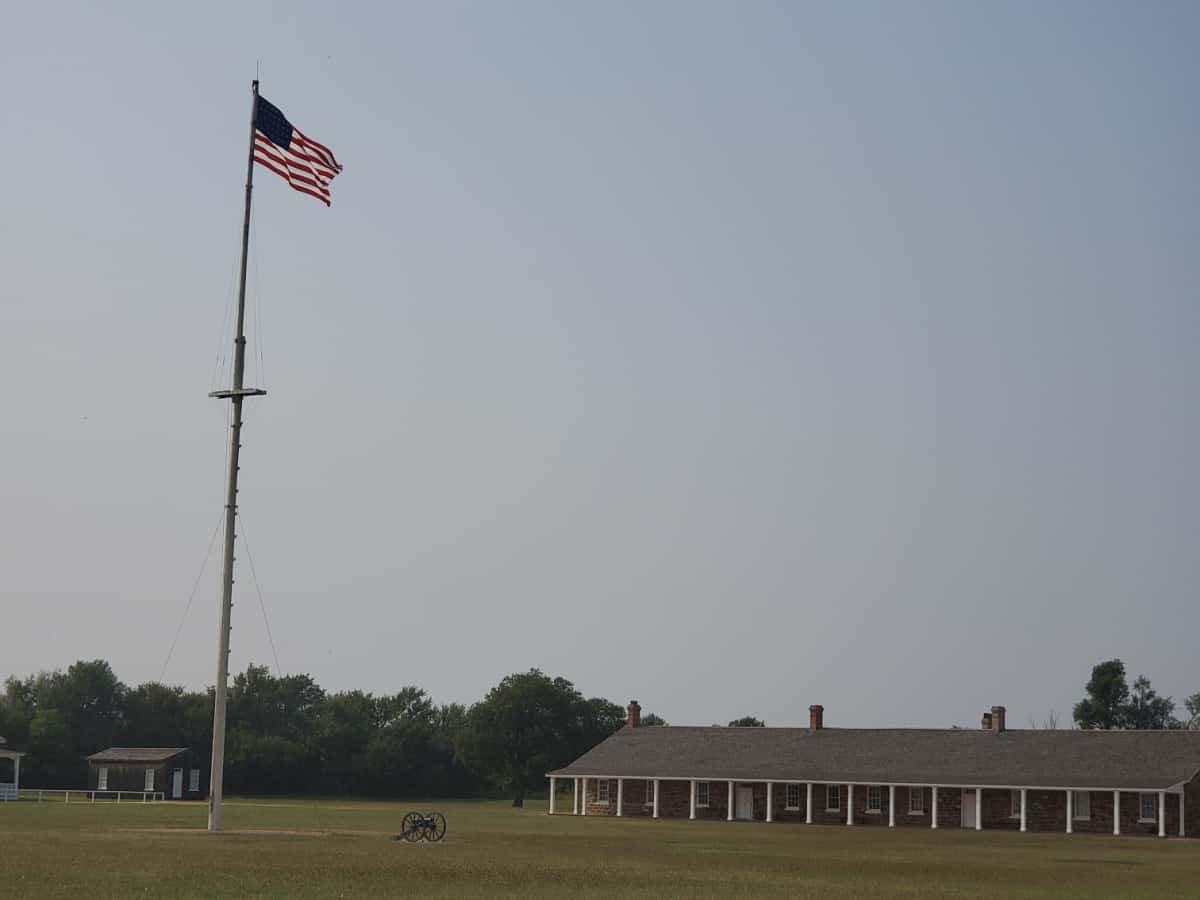
Flag in the marching grounds
Make sure to look at the American Flag in the middle of the parade grounds. You will notice it has 36 stars, the number of states at the time the Army Post was operational in the 1860s and 1870s.
Most travelers saw the flag and felt secure. Unfortunately for the Plains Indians, it became a symbol of losing their freedom.

New Commissary/ Blockhouse
A new commissary was built during the peak of Fort Larned to keep up with demand. Later it was turned into a schoolhouse and library. The Blockhouse served as a prison.
Old Commissary/ Quartermaster Storehouse
The old commissary was a place where supplies were held including food, clothes, and ammunition.
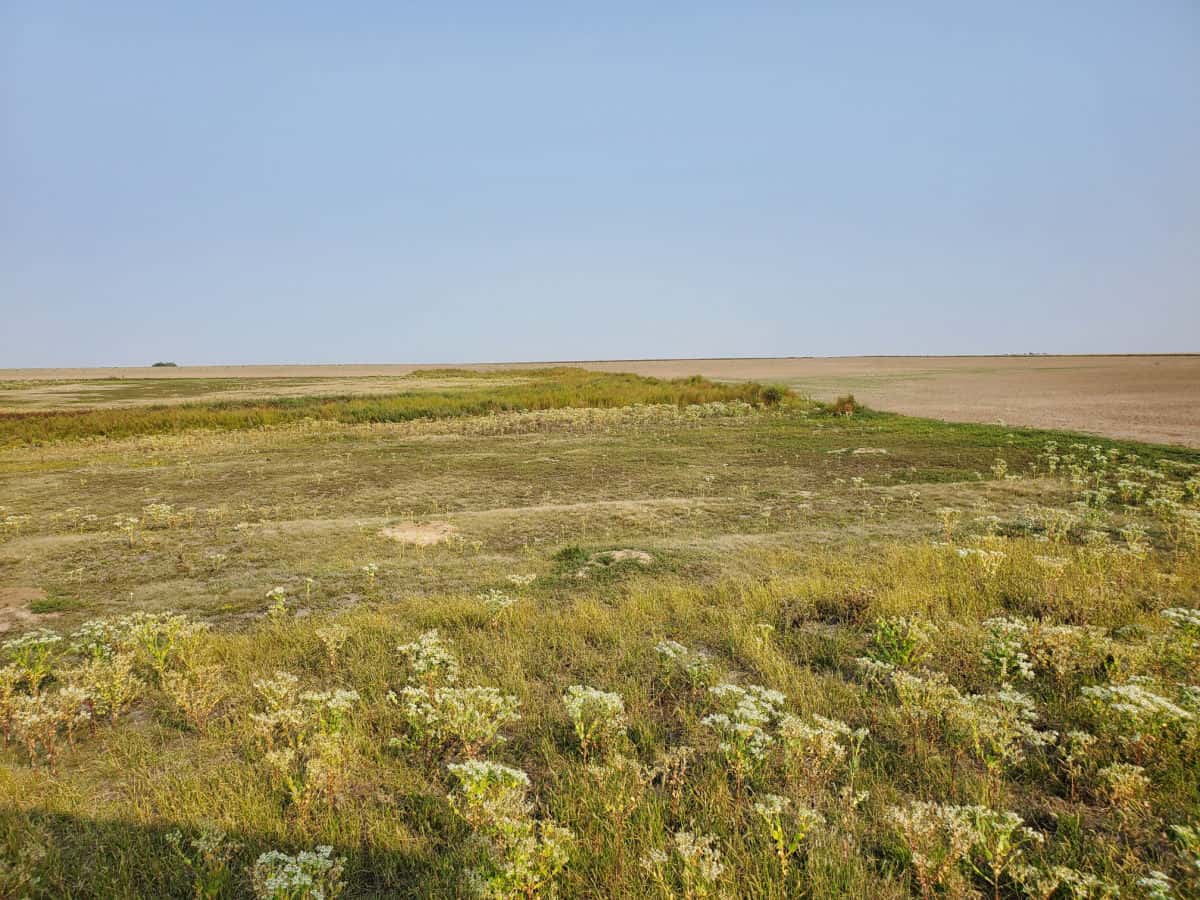
Sante Fe Trail Ruts
The Santa Fe Trail ran right behind the Quartermaster Storehouse and Old Commissary. The American Flag was a welcoming sign for people on the trail.
You can see wagon ruts from the Sante Fe Trail about 5 miles from the Fort. You will need to drive down a few dirt roads and then walk on a grassy lawn to reach the overlook for the wagon ruts.
I would advise wearing closed-toed shoes for walking out to the overlook. There are prairie dog burrows, ants nests, and other bugs along the way.
Once you reach the wooden overlook you can look out and see a small section of Sante Fe Trail ruts.
Definitely keep an eye out for Prairie Dogs while you are looking around.
Picnic Area
There is a nice picnic area near the main entrance to the park. There are multiple picnic tables along with restrooms. This is a great place to relax before or after your visit to the Fort.

Hiking in Fort Larned National Historic Site
Always carry the 10 essentials for outdoor survival when exploring.
Fort Larned History and Nature Trail
The history and nature trail takes you beyond the parade grounds to explore a complex of stables and corrals, and the mail station.
The park suggests 45-60 minutes to enjoy the self-guided walk.
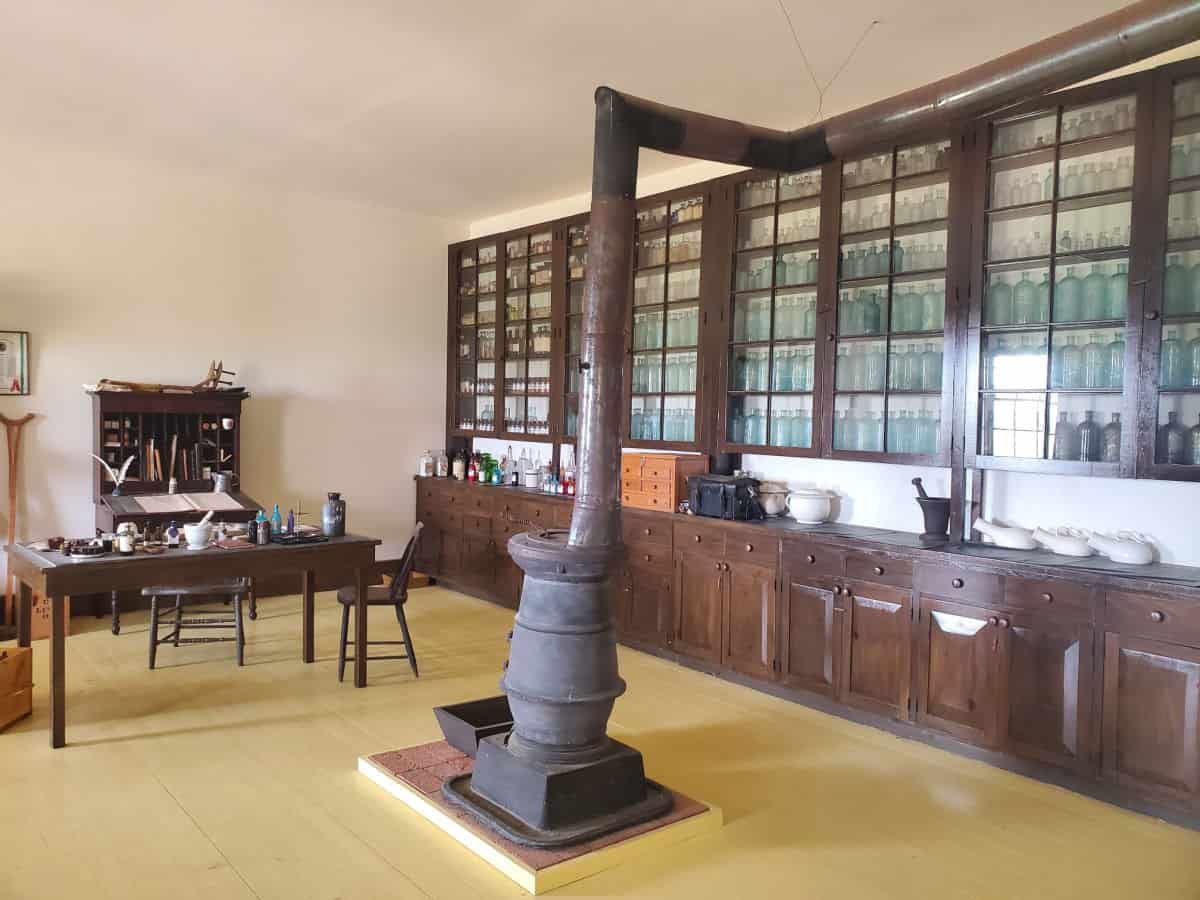
How to beat the crowds in Fort Larned National Historic Site?
We did not experience a crowd while visiting the park. Memorial Day and Labor day weekends along with summer months may be a lot busier with special events and living history programs.
Where to stay when visiting Fort Larned National Historic Site
There are no National Park Lodges within the park.
Nearby lodging includes:
Days Inn by WyndhamGreat Bend - look forward to free to-go breakfast, laundry facilities, and a gym at Days Inn by Wyndham Great Bend. Stay connected with free in-room Wi-Fi, and guests can find other amenities such as a business center and a snack bar/deli.
Holiday Inn Express & Suites Great Bend - Located close to Veterans Memorial Park and Jack Kilby Memorial, Holiday Inn Express & Suites Great Bend, an IHG Hotel provides a free breakfast buffet, dry cleaning/laundry services, and a 24-hour gym. For some rest and relaxation, visit the hot tub. Stay connected with free in-room Wi-Fi, and guests can find other amenities such as a 24-hour business center and a snack bar/deli.
Super 8 by Wyndham Great Bend - take advantage of free continental breakfast, laundry facilities, and a gym. Guests can connect to free in-room Wi-Fi.
Best Western Angus Inn - free continental breakfast, a free roundtrip airport shuttle, and dry cleaning/laundry services at Best Western Angus Inn. Enjoy a meal at the two onsite restaurants. Free Wi-Fi in public areas, with speed of 25+ Mbps, is available to all guests, along with a bar and a gym.
Click on the map below to see additional vacation rentals and hotels near Fort Larned.
Camping
There are no National Park Campgrounds in the park.

For a fun adventure check out Escape Campervans. These campervans have built in beds, kitchen area with refrigerators, and more. You can have them fully set up with kitchen supplies, bedding, and other fun extras. They are painted with epic designs you can't miss!
Escape Campervans has offices in Vancouver, Seattle, Portland, San Francisco, Las Vegas, Los Angeles, Phoenix, Salt Lake City, Denver, New York, and Orlando
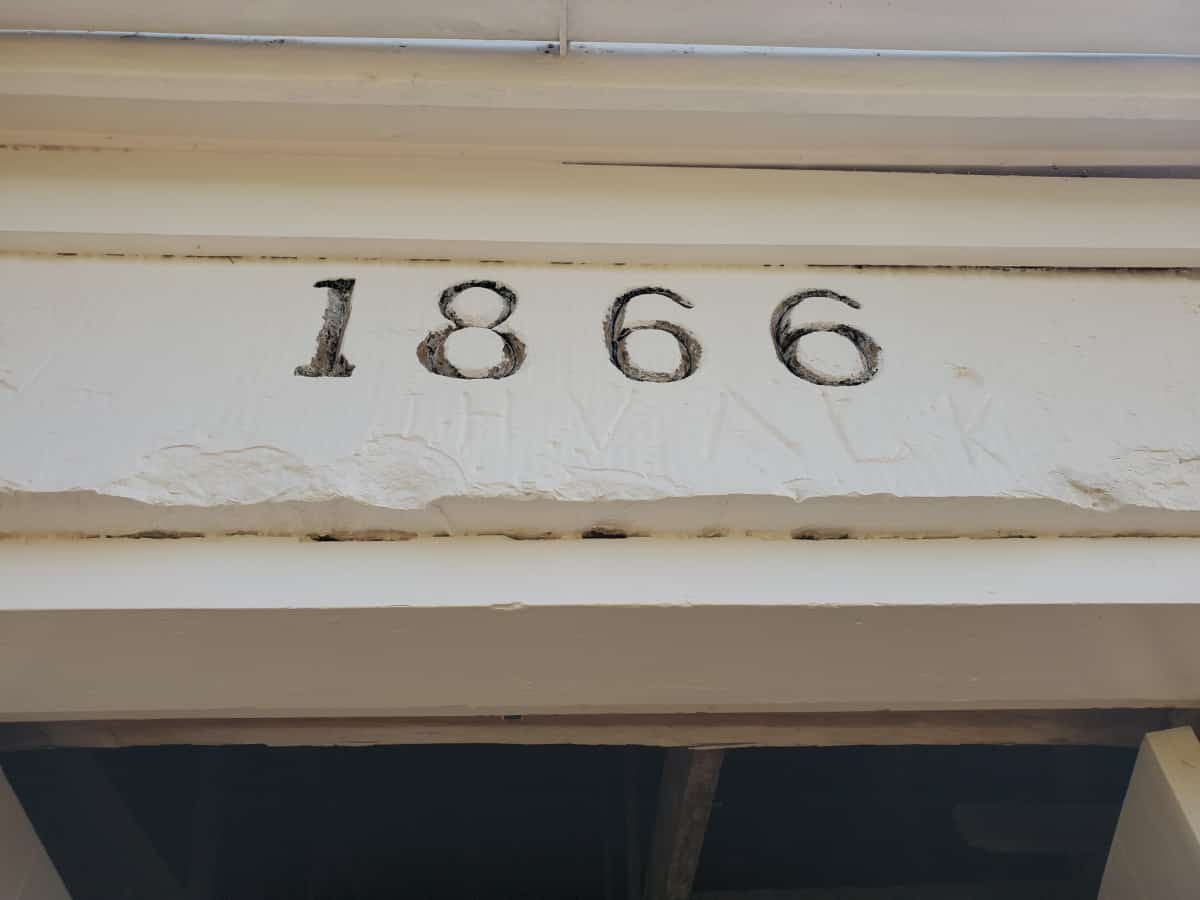
Parks Near Fort Larned National Historic Site
Nicodemus National Historic Site
Sand Creek Massacre National Historic Site
Bent's Old Fort National Historic Site
Tallgrass Prairie National Preserve
Fort Scott National Historic Site
Wilson's Creek National Battlefield
Pea Ridge National Military Park
Check out all of the Kansas National Parks along with neighboring Nebraska National Parks, Missouri National Parks, Oklahoma National Parks, and National Parks in Colorado.
Check out all of the US National Historic Sites
Make sure to follow Park Ranger John on Facebook, Instagram, Pinterest, and TikTok

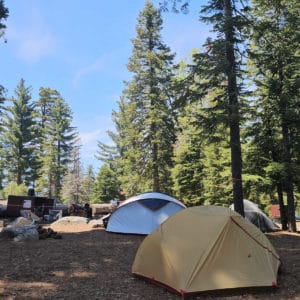
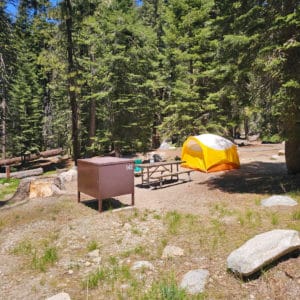
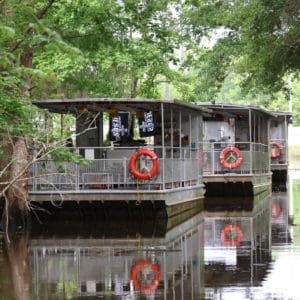
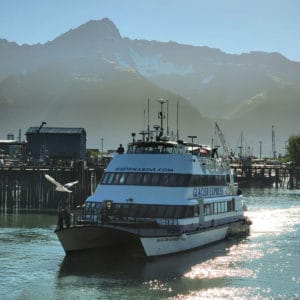
Leave a Reply